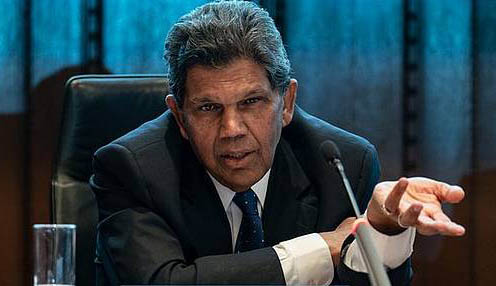
The occasional exchanges on ethnic relations in Guyana that one sometimes sees in the local media could benefit from the imposition of some basic principles. Such principles could also inform a dialogue that will hopefully be launched soon among the political parties in Guyana.
In his poem, “Listening to the Land”, Martin Carter wrote: “I bowed down, kneeled, listened to the land; but all I heard was a wordless whisper. ”In any discourse on race relations in Guyana, we should, of course, listen to the land, and listen to the hearts of descendants of Amerindians, slaves, indentured laborers, Guyanese of diverse descent, their common history of suffering, and their insistence . the search for dignity and freedom.
In 1937, under the cloud of World War II, the historic Oxford Conference of Churches adopted a set of basic principles on race relations for subsequent ecumenical gatherings. The World Churches Conference highlights these principles and we draw here on its 1965 publication, Ecumenical Declarations on Race Relations. The Oxford Conference recognized that the relationship between people of different races was a particularly critical problem in the world. For Christians, they pointed out, the starting point is the affirmation that all human beings, by birthright, are children of God created in his image and are therefore brothers and sisters of one another.
All the races of mankind, the Conference continued, have been blessed by God with unique and unique gifts. All have made, and continue to make, unique and unique contributions to the enrichment of mankind. All share in the love, concern and compassion of God. Each race is very grateful for its own heritage and possibilities.
The Oxford Conference expressed the following principles for embedding in the public feelings and policies of nations and communities:
1. Recognize the value of every human being as a person.
2. The right of all persons, whatever their race, color or current status, to the conditions essential to life as a person, to education, to opportunity in their profession, leisure and social intercourse.
3. Full participation in fellowship and leadership for members of less developed people as they prove their ability.
4. Active cooperation and fellowship among leaders of different racial groups.
5. Recognize the community of its responsibility to less privileged people of whatever race or group, not only for their help and protection but also for special educational and cultural opportunities.
6. The need for any economic and social change that will open the way to full opportunity for people of all races.
Following race discrimination and the Holocaust during World War II, the 1945 United Nations Charter and the 1948 General Declaration adopted guiding principles for the prevention of discrimination. In 1949, the United Nations published a publication, “The Main Types and Causes of Discrimination” which proposed the following statement of principles: “Because human beings are alike and different, the principle of equality must be based on some criterion. That criterion is found in an ethical concept, which is the idea of the dignity of the human person. Human dignity implies that human beings are to be treated as purposes in themselves and not merely as means to an end. Based on this ethical concept of human dignity, the following principles are based:
1. The principle of individual liberty, a
2. The principle of equality of all human beings before the law. ”
In 1971, the United Nations published a groundbreaking global study on Racial Discrimination, written by Hernan Santa Cruz, one of the drafters of the Universal Declaration of Human Rights. The Santa Cruz study, revised and updated in 1976, has a useful discussion on community action to eliminate prejudice and racial discrimination. Community action, he wrote, could include formal and informal education to combat existing or hidden racial prejudice. Such education could be offered in the public schools, higher education institutions, trade unions, and many other socially active organizations.
Informal community education to combat racial prejudice and discrimination could be disseminated through a variety of communication media, including the press, radio, television, films, recordings, magazines and popular pamphlets. Santa Cruz said relevantly: “Experience has shown that such activity should not be restricted to preaching tolerance and goodwill, and that it is most effective when it supplies factual information to help correct misconceptions, and provide information and specific recommendations for successful social action. ”
Additional principles for fostering fair race relations can be found in the Statement and Action Program of the 2001 Durban United Nations Conference. We were fortunate to have had the experience of writing the first draft of the declaration and implementation program, as indeed the World Conferences previous 1978 and 1983.
In highlighting the above principles on race relations we hope to encourage further discussion among Guyanese in good faith and their leaders on the ethical, philosophical, political and policy bases for the practical fulfillment of the Guyanese dream of One Nation, One People, One Destiny .